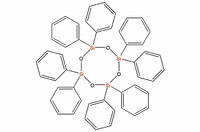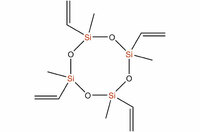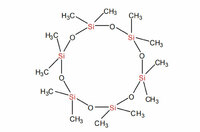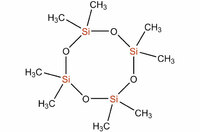SiSiB® PC5210
Specifications
SiSiB® PC5210
Dimethylchlorosilane
SiSiB® Chlorosilanes are a group of reactive, chlorine-containing silicon compounds, used in many chemical processes. Each such compound has at least one silicon-chlorine bond.
Technical Data
CAS No. 1066 35 9
EINECS No. 213-912-0
Formula C2H7ClSi
Molecular Weight 94.62
Boiling Point 36°C [760mmHg]
Flash Point -25°C
Color and Appearance Colorless clear liquid
Density 25/25°C 0.868
Refractive Index 1.3827 [20°C]
Min. Purity 96.00%
Application
All chlorosilanes react with water to produce hydrogen chloride. The remaining hydroxyl group bonds to the silicon, initially forming a silol group (analogous to alcohol). In general, this will
eventually bond to a solid oxide surface or react with another chlorosilane or silol molecule. In the latter cases, the oxygen atom forms a link between two silicon atoms, analogous to the ether
linkage in organic chemicals, and identical to the bonding in silicon dioxide.
Organic chlorosilanes are usually used as coatings for silicon and glass surfaces, and in the production of silicone polymers.
Methyl chlorosilanes have one to three methyl groups. In the case of dichlorodimethylsilane, two chlorine atoms are available, so that a reaction with excess water produces a linear chain of
ether-like linkages between silicon atoms. As in polyethers, these flexible linkages produce a rubbery polymer, polydimethylsiloxane (PDMS). Trichloromethylsilane can be used to induce branching
and cross-linking in PDMS molecules, while chlorotrimethylsilane serves to end backbone chains, limiting molecular weight..
Packing and Storage
SiSiB silane® PC5210 organofunctional silanes are supplied in 170Kg steel drum.
In the unopened original container SiSiB® PC5210 has a shelf life of one year in a dry and cool place.
If you want to know more details of Organofunctional Silanes, please visit our website.
- Country: China (Mainland)
- Business Type: vmq fvmq,htv on silicone,,Manufacturer
- Market:South East Asia, Middle East, America, Europe,Americas
- Founded Year:1989
- Address:Room 703, Tower A, KangYuan ZhiHuiGang, No.50 Jialingjiang East Street
- Contact:sinosil .com










